
|
| Accept Cookies | Customize | Refuse Cookies |
Victor76 www.juzaphoto.com/p/Victor76  |
 | Zeiss Distagon 18mm f/4 (C/Y) Pros: Size and weight, typical Zeiss building, colors, great correzine distortion Cons: weak microcontrast Opinion: He had for years of analog Contax, very interesting on the negative, already paid on the slide little micro-contrast, with acceptable images at very small apertures. We are talking about a very thorough with wide-angle focal scheme designed in the late 60's, it has vast physical limits to beat. impressive achievement by then technically and fundamentally usable plan. The virtual absence of distortion is still interesting. color rendering of all respect. If one has it, well for him. If one wants to buy, it is right to know that the weakness of the micro-contrast, current sensors, will be very obvious, and from this point of view even a 17-40 canon is superior VERY. If not for collectors use, it is preferable grandchild currently in the catalog. sent on July 10, 2016 |
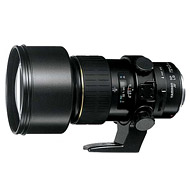 | Tamron SP AF300mm f/2.8 LD IF Pros: A 300 2.8 AF for canon at the price of a manual focus. Very well built, sturdy, good IQ, good contrast, nice blurred. AF is fast enough for the type. Cons: Weight, AC TA. Opinion: strictly by the last 3 versions derives manual focus Adaptall-2, of which the second and the third are internal fire. The Canon EF version is particularly heavy: 2800g, compared to about 2,300 with the other attacks. Obviously it is not stabilized and the AF is operated by a simple electric motor, in fast enough and precise truth, once the micro adjustment on the single machine body. There are compatibility issues with modern bodies and this also applies to other tamron with EF attack "ancient." I had the 70-210 2.8 SP and everything flowed smoothly even there. If closed by F4 up, I could not find the image defects, if not a modest residual AC disappearing entirely to intermediate diaphragms. A 2.8 instead of the AC is the main flaw, which is seen especially in the light and dark passages, obviously. The image is always bright and contrasty. Council to use it smooth on FF to exploit the brightness and focus. 6D is godilissimo andfocheggia with precision. Accept duplicators, including the Canon 1.4x III which partly enters into the lens and therefore does not go anywhere. But the most she asked about detail (multipliers, small sensors and hyperdense ...) and zooms in to the AC. In these cases it is wise to turn a bit 'the diaphragm, however, entering the field of use of zoom lenses lighter and stabilized, losing a bit' of meaning. So interesting perspective but with limitations due to age and design tolerance with respect to the AC, I'm going to enjoy smooth, for what it is, for portraits and pictures in the halls. For what it costs to do a lot, but does not replace the existing Canon, and God forbid. It must be said that remains a cheap way to get to 420/4 or 600 / 5.6, then if you have the patience to eliminate the AC in post or decide to close a stop, keeping to 600mm the AF operation on any camera because nominally 5,6.rnrnEdit: I made a series of comparative shots with the canon 300 F4 L IS F4 and 5.6. The Tamron comes head-on from the comparison, The sharpness is very similar and the residue of AC is comparable. It must be said that the visible AC 2.8 is purple easily corrected in LR and already F3,2 the drop is significant, compared to canon color has a little duller and is more contrasted. All things that LR can be changed at will. sent on June 25, 2016 |
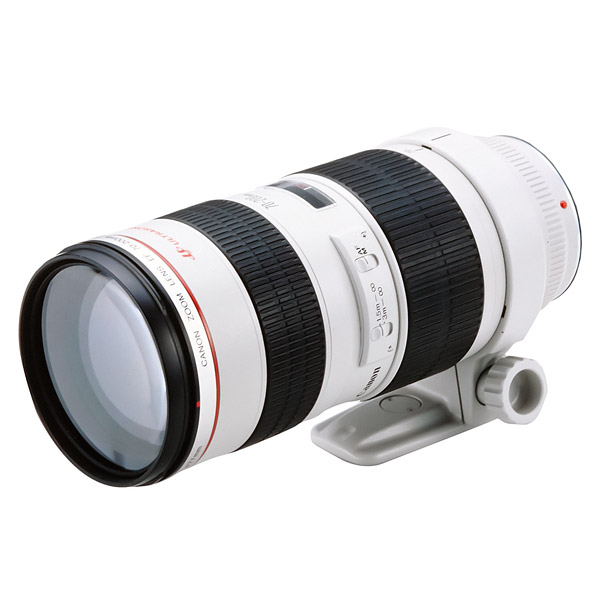 | Canon EF 70-200mm f/2.8 L USM Pros: very good image quality, blurry and beautiful colors, construction quality, speed and precision AF Cons: It is not weather sealed, slight but noticeable sharpening decline to 200mm in ta Closest focusing distance to focus 1.5m Opinion: This glass is marketed for more than 20 years. If you just came out was amazing, now it is no longer the top of the top, but it still represents an optimal choice if you do not need the stabilizer. The optical yield is very good already ta at all focal lengths, 200mm except where a slight decline, not dramatic, make it not advisable to use it multiplied on dense aps sensors. Just diaphragm still barely to get sharpness respectable. Colors and blurry are first rate. It is robust and reliable and focheggia fast, safe and quiet. A bit 'limiting the minimum distance of 1.5 m, perhaps the longest for this type of optics. Speed ??and accuracy of fire make it preferable to Tamron and Sigma in sports, where the stabilizer is not needed, as the fire needs to be lightning. Optics as portrait, landscape, sports, all, to the extent that lacks stabilization and therefore must use safety times. In short, the best is IS II, but it costs so much, then, if the stabilizer is not indispensabile, I think he is still there, very reliable mule. sent on May 24, 2016 |
 | Zeiss Tele-Tessar 300mm f/4 (C/Y) Pros: Excellent contrast and flare control, very good resolution when compared at the time of production, excellent mechanical construction. Brilliant color rendition. Cons: It is not apochromatic, sharpness only adequate when compared to the best current standards. Opinion: The tele-tessar is an old pattern, I would say old. A triplet front, a back focal doublet. No floating elements, no aspherical lenses, no index exasperated. Was already "conservative" in the '70s, when compared to more aggressive competitors. In contrast to this embodiment provides an excellent treatment T *, a number of air passages very reduced glass and glazing not exasperated but of excellent purity. The precision construction and mechanics are at the highest level. It follows that it is a view from the sharpness good but not comparable with the best competitors now and even then, the negative effects of which are, however, masterfully disguised as a macrocontrasto very thorough. So, if you look at the image at 100% but at normal size, it has a high sense of sharpness. The color rendition is very beautiful, brilliant. Not being apochromatic suffer from a residual AC wide open, but not much. Of its kind is still a champion in the sense that it is much more usable and resolving the SMC Takumar 4/300 and other similar glass. I do not recommend the use of 2X multiplier with APS-C sensors with high resolution, because you ask too much. I note that there are 2 versions of this light. An original massicia and heavy dating back to the 70s and a lighter 80s, produced until 2005. Half a kilogram of difference thanks to a more streamlined design and lightweight metals. Optically are virtually identical. Believe me, it stands out in any test, but you do like him. sent on March 17, 2013 |
 | Zeiss Planar 135mm f/2 (C/Y) Pros: Lights and Cromie, construction. Cons: Sharpness very good but not excellent Opinion: It was designed in the first half of the 70 to be inserted into the Rolleiflex SL system, groped to improve their business results. With that attack it remained at the prototype stage, with a few built. Was quickly re-inserted in the Contax system, which flanked the Sonnar 2.8 / 135, however, offered a much higher price than that required for the little brother. At the beginning of the 80s the production was suspended, to be temporarily resumed in 1992, when this goal was proposed in a limited edition 60th Anniversary. The prices were still very high. If you search for the Zeiss that gives something in terms of performance to ta barattandole with colors rich in nuances and contours dreamy (without excess) this could be the right objective, provided you use it at full aperture. In contrast to the strict Planar 2/100, 2/135 with this simpler optical design (one less element, no floating, wide open is less descriptive, but in return gives softcromievery special. 100 describes the 135 tells. Obviously the performance is still respectable, but for example to any joint opening proves less resolving the Sonnar 2,8 / 135 (which is a blade). For F2 is a faint remnant of AC easily eliminated in Post Production. Prone to flare, it requires attention. The building is exemplary. To keep up the perceived quality is top notch. sent on March 17, 2013 |
 | Zeiss Planar 100mm f/2 (C/Y) Pros: very high optical performance. A champion. Cons: Quente written in the pros, if you use it in the portrait. Opinion: From the optical performance point of view is an exceptional goal and absolutely not surpassed. Crystal clear, large containment of aberrations, exceptional uniformity center / edges, beautiful colors and brilliant, thwarted, great blurry. This whole risolvenza right to the edges and corners may, however, in some cases, be a hindrance in the portrait. Thus is shown in the picture where you want to bring out the description of the details, as well as in architecture, in reproduction, stil life, etc ... The imperfections of the faces will be, however, all reproduced faithfully and to be treated in PP if unwanted. The great sharpness blur and crystal clear give a cut of the first-rate plans. sent on March 16, 2013 |
 | Zeiss Planar 85mm f/1.2 (C/Y) Pros: Optical performance in general except for residual AC TA, blurred beautiful, flawless construction Cons: AC TA and MF manual portraits impatient on the subject Opinion: 85mm opening to 1.2 are the canon (FD-EF LI, L II EF). As the only alternative, there is only this Zeiss. it is an object produced with a very limited edition: a first batch in 1982 for the 50th anniversary of the Contax and a second lot in 1992 for the 60th. Derives from the lens mount to the film industry. For the avoidance of doubt subio say that is not the same as the Canon. The Zeiss is sharper, including the center, already at F1, 2 and this advantage increases by closing the diaphragm. The zeiss is also very very sharp even at the edges. Compared to the canon, however, manifests a residual AC TA, however correctable in post production. F / 2 and then disappears even that becomes sharp as a macro. This is definitely an exercise in style Zeiss particularly successful from the point of view of optical performance as well, and incredible when you consider the results to the edges in a lens so bright. From this point of view is incomparable. Staying at home Zeiss is more than 1.2 resolvent of 1.4 / 85 closedto F2. What might not like? The 85mm focal length is a portrait and a glass so perfect in this removes the sense of enhancing the center (here often called magic) that lead to the loss of risolvenza and indefiniteness perfiferica that comes with it. So many portraitists likely to go to a boring first class. For the rest of the color rendition is amazing, as well as the morbidezzo of focus, but only for what is not in focus. Compared to the Canon is more natural and more three-dimensional, with a focus clearer, less muddy. The color rendition is softer, with less contrasting lights. sent on March 16, 2013 |
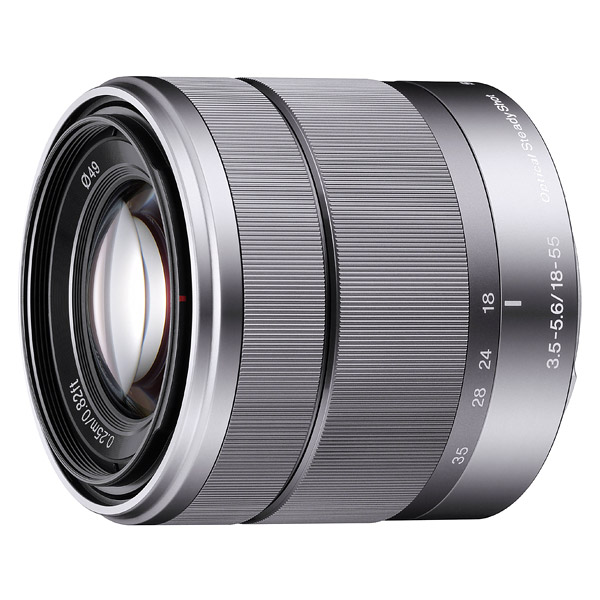 | Sony E 18-55mm f/3.5-5.6 OSS Pros: Image quality, good construction, fast and silent AF, effective stabilization Cons: Size. Opinion: The result of this light kit that you can not speak well. And 'perhaps one of the best. Besides, he is also one of the most expensive. The only limit of its kind, is the size. It is not particularly great, but if you intend to use the nex as an alternative to a compact, then this lens will not help. Melgio a fixed (is coming out of a 20mm f 2.8) or the 16-50 collapsible. sent on March 16, 2013 |
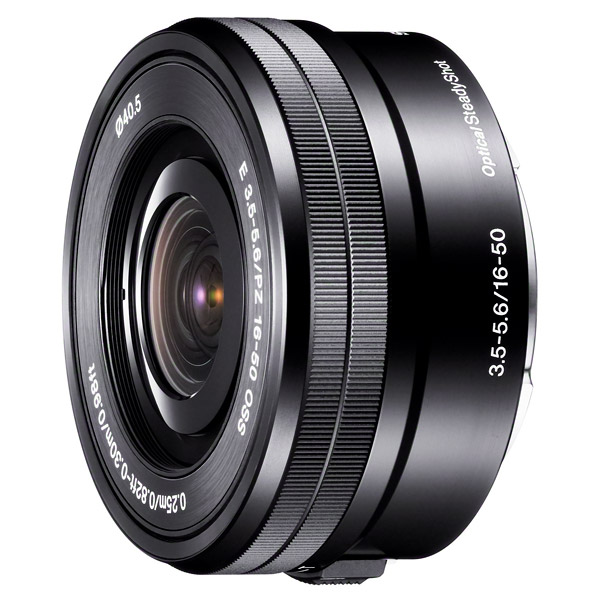 | Sony E PZ 16-50mm f/3.5-5.6 OSS Pros: Image quality more than adequate, good stabilization, AF fast and silent, compact. A little more contrasty E18-55 Cons: Zoom control and assisted with the same feeling that require habit. Lack of built-in hood Opinion: The image quality of this obbiettio I was almost surprised, but also not given. I like the 16mm that make me renounce without hesitation to 5mm less than the obvious point of comparison 18-55. For both, therefore, good image quality, quietness and effectiveness AF. This is more compact when closed and makes the camera easier to transport, almost "taschinabile", also because you can leave at home any 16mm. If instead it is inserted into a bag-kit, the final benefit in terms of compactness is obviously ridotto.rnProblemi management of the flare because it lacks the built-in hood. It 's more contrasty E18-power zoom 55.rnrnIl command requires addictive. It has a fairly fast and accurate response. Personally, the first approaches nex-6 comes to control the zoom lever from the axial to the shutter-release button because my cerebellum tends to recognize the cone along a compact. The result, of nex-6, is the SHUTDOWNor turning LEFT or anything if you turn RIGHT. In this sense, I find it very interesting the repeated command of the nex-3. Having only one ring on the lens when the camera is set to AF this is used to zoom in (ie two commands to zoom in close to each other), while if it is set in MF, then you need to make fuoco.rnrnIn synthesis, one of the best goals kit? Probably yes, and the same is true of the E18-55 sent on March 16, 2013 |
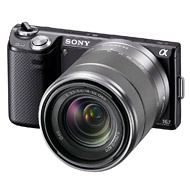 | Sony NEX-5N Pros: Image quality, size, orientation features, the peacking makes it easy to use the manual focus goals high build quality. Price. Cons: Park optical native tight, of the same size which often detract from the advantages deriving from the compactness of the body, adjustable screen only in two directions, Flash not integrated, ergonomia.rn Opinion: My first introduction to the world Nex. I liked it a lot. Excellent image quality in a small body. Pleasantly small if you use it as a compact, perhaps a little 'too if coupled with bulky objectives. Ergonomics compromised by the small size, in particular, may not like the little finger "free." Great with vintage for the large amount of adapters and for the peacking. Shortly functional integrated flash, which should always have with you. The optional electronic viewfinder is great quality, but it is a crock so well integrated in the package and which occupies the coupling of the flash. If you want a viewfinder elttronico to use often or always, as the cost of the same, take the 6 or 7. If you prefer a compact viewfinder and the integrated flash, then it is a good choice. It is used to price interessanti.Se but what you need is just the compactness and image quality and lens interchangeability does not interest you, thencouncil also think about the RX-100. sent on March 16, 2013 |
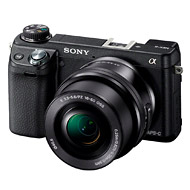 | Sony NEX-6 Pros: Image quality, size, excellent electronic viewfinder and the integrated flash, customization, ergonomics, size, orientation features, the peacking makes it easy to use the goals to fire manualernQualità constructive high Cons: Park optic native tight, of the same size that often detract from the advantages of compactness of the body, adjustable screen only in two directions, battery charging system (but there are alternatives). I do not care for now, but that misses the point out jack for an external microphone. Opinion: I just bought the nex-6n with the 16-50 instead of a Nex-5n with 18-55, additional viewfinder and flash obviously not integrated. Compared to the younger sister, which I think is another great camera in its own way, I gained in compactness, which was my original intention. The body of the 5n is more compact, but with the 18-55, the flash in your pocket and electronic viewfinder mounted in fact the package is more cumbersome and wasteful. Once the camera arrived I was able to appreciate the best ergonomics, interface easier to manage, the convenience of stasto FN. Does not have the touch screen, but to me that's okay, because that board using both 5n EOS I was to give the fingerprints on the large monitor SLR Canon.rnCome said the image quality is not great but greater than that of younger sister , which uses sensor and processors almost identical. The focus is fast, thanks to the use of both technologies. Very convenient customizable FN key to access veiltively to the settings most frequently used. Nice HDR though, almost admitting his own limitations, only works on JPG. The EVF has a very good definition and turns on / off much faster than the optical 5n.rnDivertentissima with vintage, thanks to the wide availability of inexpensive adapters and the focus peaking.rnIl swiveling display is convenient to use the camera by very high or very low, but only in extreme horizontal. Allows vertical instead of shooting from optical nascosti.rnIl park is not at the level of one of the micro 4/3, much less than that of the SLR. Is growing but in a disorderly manner and lack professional zoom. Plus some objectives may be more compact and better exploit the small size of nex.rnTerrificante the supplied charger, which only allows the battery Montanta on fotocamenra. And 'slow, does not allow to use the machine during charging and not charging the batteries from third parties. Luckily there are a few money chargersuniversal conclusion that go far bene.rnIn a great choice for those who want to travel light without sacrificing a high quality image and for those who want to use optical vintage. Used with the 16-50 is little more than a compact, but the result is hardly comparable. sent on March 16, 2013 |
 JuzaPhoto contains affiliate links from Amazon and Ebay and JuzaPhoto earn a commission in case of purchase through affiliate links.
JuzaPhoto contains affiliate links from Amazon and Ebay and JuzaPhoto earn a commission in case of purchase through affiliate links.May Beauty Be Everywhere Around Me